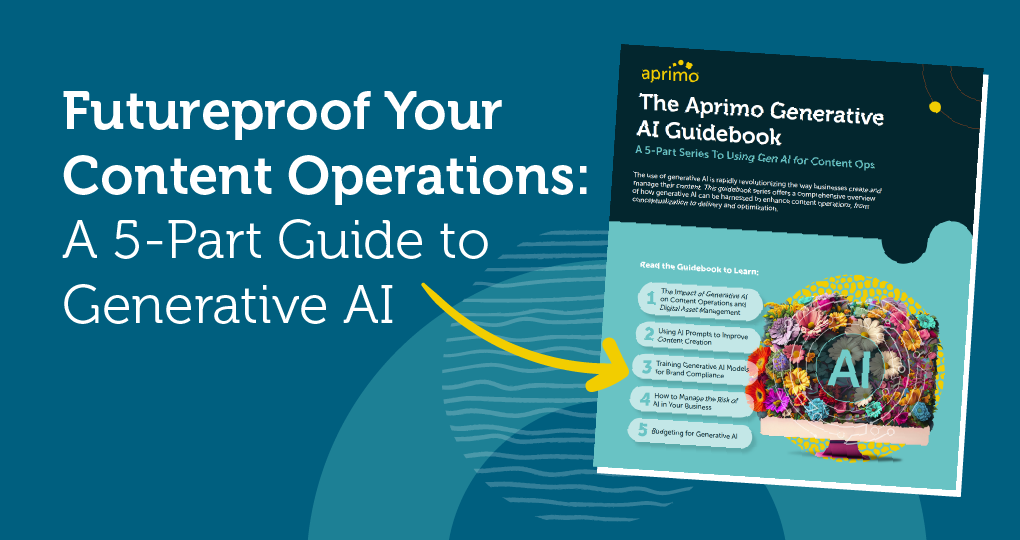Claims Processing Efficiency: DAM Solutions for Insurance Companies

Of the business aspects insurance companies have to deal with, claims processing is one of the most critical processes to get right. According to EY, 87% of customers decide to continue working with an insurer based on the effectiveness of the claims processing experience. That means focusing on ensuring an efficient claims processing experience is imperative for insurance companies to maximize plan renewals. Among other technologies and solutions, a digital asset management (DAM) platform can help. Let’s discuss how.

Understanding Challenges in the Insurance Industry
Some common challenges the insurance industry faces in claims processing are:
-
Time and resource-consuming manual processes and paper-based systems
-
Lack of standardization
-
High volumes of data and documents to be managed
-
Inefficient communication channels between parties involved in the process
-
Slow turnaround time for claims processing and settlements
All these issues eventually lead to poor customer satisfaction. What does that do? Makes buyers lose trust, which leads to negative reviews and customer churn. Salesforce data shows that 88% of customers believe a brand’s experience is as important as its products. So, that’s something insurers cannot ignore.
Role of DAM Solutions in Claims Processing Efficiency
DAM systems can streamline claims processing in several ways:
-
Document Management: Insurance agents can store digital documents, such as medical records, photos, and insurance policies, in a central repository. They can then access them easily when processing a claim.
-
Version Control: Insurance documents like policies and contracts must be regularly updated. A DAM software can keep track of document versions for better compliance and accuracy.
-
Integrations: You can integrate the digital asset management system with your Enterprise Content Management (ECM) or Customer Relationship Management (CRM) systems and form a cohesive claims processing ecosystem.
-
Data Analytics: DAM systems offer data analytics and reporting capabilities, which can help you identify issues and bottlenecks in your processes.
-
Automation: A DAM system also offers the potential for automating your document categorization and retrieval mechanism. Besides saving time, this ensures maximum accuracy due to the elimination of human error.


Key Features of DAM for Claims Processing
Here’s how specific features from a DAM system impact the claims processing efficiency:
-
Centralized Storage: With all digital assets, ranging from multimedia files and documents to images and videos, stored in a centralized location, accessing and managing them becomes easier. The centralized storage feature allows claims processors to locate and retrieve relevant documents quickly.
-
Metadata Management: In claims processing, metadata can include information such as policy numbers, customer names, claim types, etc. A DAM system can automatically extract this information from the uploaded documents and attach them as metadata. It can organize the files and make them searchable, saving time and effort for claims processors.
-
Access Control: DAM software helps you secure customer information and comply with relevant data laws. You can set up access control features such as permissions to make sure only authorized personnel can see sensitive information.
-
Integrations: The DAM solution can integrate with other systems to create a seamless workflow. You can link your claims processing system with the company’s CRM or ERP systems.
-
Audit Trails: The DAM system maintains a record of actions taken on each file, providing an audit trail. You can use this information for auditing insurance claims, where accuracy and compliance are crucial.
-
Automated Workflows: Automating your insurance claims processing workflows saves time and resources. The DAM solution can automatically route claims and documents to appropriate personnel, reducing manual tasks.
Choosing the Right DAM Solution for Your Insurance Company
Choosing the right DAM platform makes all the difference. The more well-aligned the software is with your company’s needs and goals, the better.
Here are some factors to consider when selecting a DAM system:
-
Your needs: How do you plan to use the DAM system? What kind of assets do you need to manage? What are your storage and security requirements? Do you want to integrate another system with the DAM? Answer these questions to run the first search for digital asset management software.
-
Software scalability: Ideally, you want a DAM that can scale with your company’s growth. Discuss this with your potential vendor.
-
Security features: The DAM should have robust access control and data encryption capabilities.
-
Cost: You should consider the return on investment (ROI) potential and the Total Cost of Ownership (TCO) of a particular solution. The latter will include initial implementation, training, support, and ongoing maintenance expenses.
-
Reputation: What is the vendor’s reputation? Do they have experience working with insurance companies? Check out case studies and customer testimonials.
Don’t settle for the first DAM system that comes your way. Have at least three options to compare. Choose the one that best fits your budget and requirements.


Integration Challenges and Solutions
Selecting a digital asset management software is the first step; the next is integrating it into your existing claims process. Here are some challenges you may encounter in this step and a few tips to mitigate them:
-
Data Silos: Your existing system may have stored data in different environments and formats. Putting all this data together into a DAM system may be a challenge. You can resolve this issue using an integration platform or middleware to connect your claims processing software with the DAM system. Or use the DAM’s API to connect it to other systems.
-
Change Management: The integration process may involve changes in your current workflows, processes, and tools. Your employees might have an issue adapting to these changes. Proper training can help tackle this problem.
-
User Adoption: It is essential that your team fully embraces and utilizes the DAM system, which can be challenging in the beginning. Training will help. You should also collect feedback from your employees and address their concerns promptly.
-
Cost Management: Integrating a new system with your old one can be costly. Set aside a budget for this transaction. If you have a limited budget, prioritize the features you need immediately. Then, create a roadmap to implement other features in the future.
A reliable DAM provider will help you keep all these challenges at bay.




